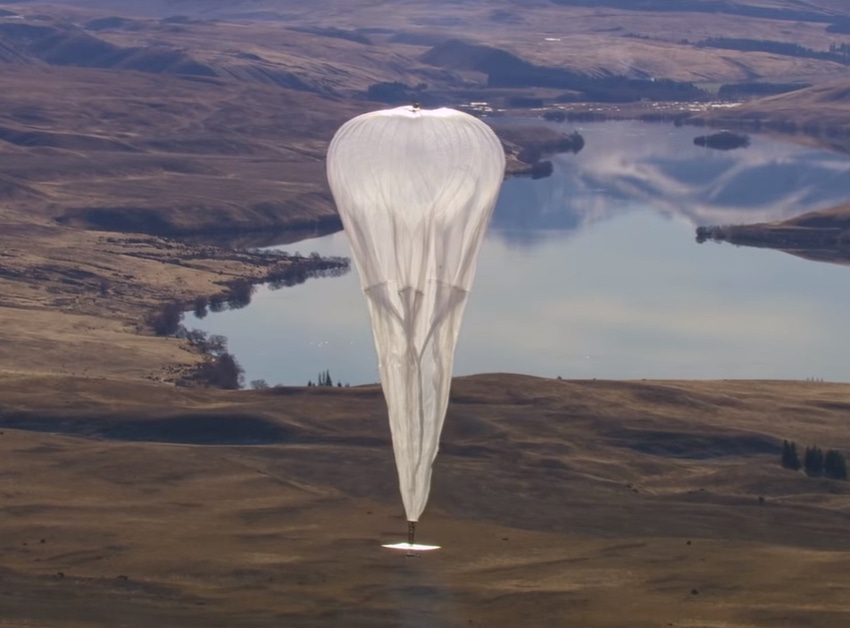Commercial contract negotiations with Telefonica Peru have allowed Google’s Loon to respond to Amazonian earthquakes within 48-hours of receiving the call.
May 30, 2019

Commercial contract negotiations with Telefonica Peru have allowed Google’s Loon to respond to Amazonian earthquakes within 48-hours of receiving the call.
While the prospect of delivering connectivity via hot air balloons might baffle some, Google’s old-school approach is proving it has a valid and justified place in the digital world. Not only can the balloons deliver connectivity to underserved and commercially-unattractive regions, but the fleet can be quickly mobilised to assist in areas hit by natural disasters.
“Over the past few months, we have been in negotiations with Telefónica on a commercial contract that would utilize Loon’s balloons to extend mobile internet access to unserved and underserved areas of Peru, specifically remote parts of the Amazon region,” Loon CEO Alastair Westgarth wrote on Medium.
“On Sunday morning, a magnitude 8.0 earthquake struck the region. After requests from the government of Peru and Telefónica, we quickly re-directed a group of balloons to the impacted area. Early Tuesday morning, the first balloons arrived and began serving LTE to users below.”
While many might see the internet and the digital euphoria as somewhat of a first-world luxury, connectivity is being interwoven into the foundations of society. Disaster management is only enhanced by technological break-throughs, from drones delivering supplies, big data analytics to assess real-time updates, or basic means of communication, connectivity is crucial in every aspect of the efforts.
Following the earthquake in Peru this weekend, Loon was able to establish a network over the affected region within 48-hours. This is not the first time Loon has responded to such an incident, but this time, due to on-going commercial discussions with Telefonica Peru, Loon was already integrated into the MNOs network allowing such a quick response.
Back in 2017, Loon once again aided the Peruvian Government following flooding in the Northern regions of the country. In Puerto Rico following Hurricane Maria, it took four weeks to deliver a service to the impacted areas with AT&T and T-Mobile. The speed of response this time around was down to already progressing conversations with Telefonica Peru.
“It takes a lot of planning and setup to make balloon-powered internet work,” said Westgarth. “Before we can begin providing service, we need to install ground infrastructure, integrate with a mobile network operator’s (MNO) network, secure regulatory and overflights approvals, and of course launch balloons and navigate them to a desired location.”
The issue which Loon might face in the future is being pigeon holed into a niche aspect of the connectivity mix.
There is of course nothing wrong with being the first-choice option to assist with recovery efforts following a natural disaster, but the team will want to be known for more than that. Loon has ambitions to become one of the key jigsaw pieces in delivering a connectivity solution across society consistently, not only when worst-case scenarios present themselves.
In September, during the AfricaCom conference, Westgarth took to the stage to outline the ambitions of the Loon business. Westgarth pointed out that this is not a suitable substitute for traditional infrastructure, but an opportunity to enhance coverage. The balloons can offer a cost-effective and time-efficient alternative to traditional infrastructure. It might not be as attractive from a technology perspective as fibre or 5G, but it is more realistic.
In proving its effectiveness of Loon in aiding disaster management efforts, Loon might be encouraging people to overlook the opportunities which are available to enhance connectivity in everyday life.
What is worth noting is this is not just an option for the developing markets, but also for the developed ones as well.
In the larger countries, the US for example, delivering connectivity to the rural communities is an on-going challenge. While this might be satisfied over the coming years, there are still regions which will be not-spots where there is no population. The commercial case for traditional connectivity might not ever be justified for some of these regions, though IOT usecases might emerge in the coming years. This is where alternative connectivity solutions, such as satellite or Loon, could plug the gap.
In the developing markets, the business case for Loon as a consistent connectivity option is much more obvious. With ARPU considerably lower, justifying network deployment in the more traditional sense becomes much more difficult. Loon can provide a more feasible alternative.
For example, according to Ovum’s World Cellular Information Service (WCIS), global average ARPU is currently $8.61 a month. In North America this rises to $33.71 and its $17.61 in Western Europe. However, ARPU drops to $1.56 a month in Central and Southern Asia, and $6.29 in Latin America & the Caribbean. Traditional infrastructure becomes difficult to justify in the more rural and inaccessible regions when you take these numbers into account.
Loon is crafting itself a useful niche which will appeal to numerous countries who have a history of being impacted by natural disasters, but it will have to be careful not to pigeon-hole itself into this nice.
About the Author(s)
You May Also Like








.png?width=300&auto=webp&quality=80&disable=upscale)


_1.jpg?width=300&auto=webp&quality=80&disable=upscale)


.png?width=800&auto=webp&quality=80&disable=upscale)